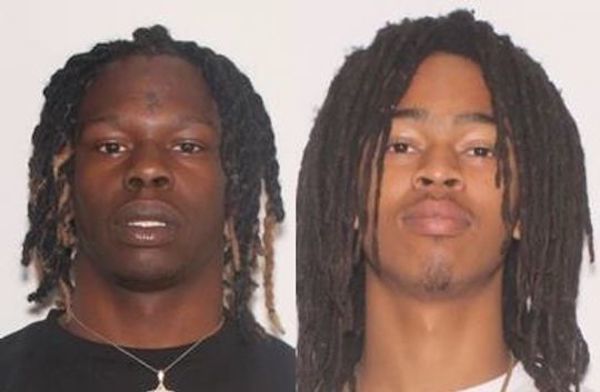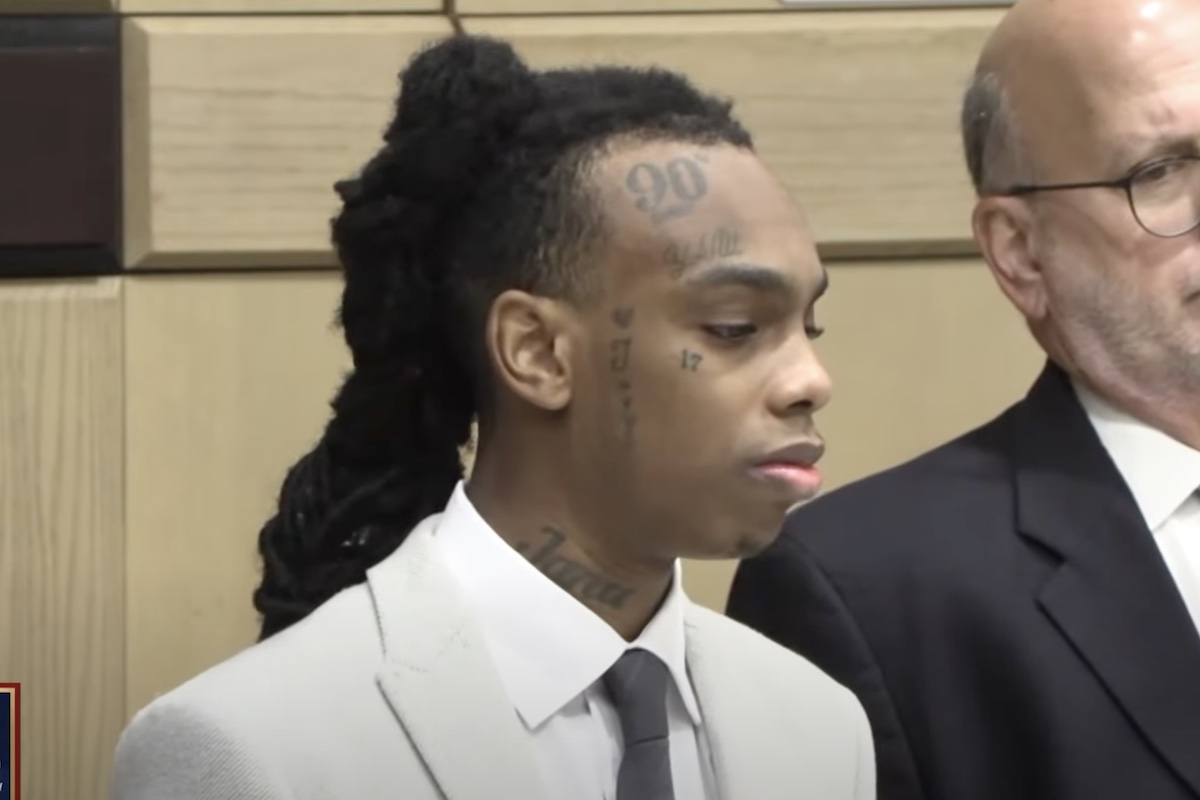Florida rapper Jamell Demons, also known as YNW Melly, is one step closer to being a free man after the jury in his first-degree murder trial could not overcome a deadlock after deliberating for over 14 hours resulting in the judge declaring a mistrial.
YNW Melly was on trial for the murder of his two friends, Christopher Thomas, called YNW Juvy, and Anthony Williams, also called YNW Sakchaser.
Melly had a tired look in court, no doubt exhausted from the court trial, but he mustered a big smile in court minutes before the jury sent a note to Judge John Murphy III informing him that they could not arrive at a unanimous decision.
The rapper could not hold back his smile after his attorney Stuart Adelstein spoke to him as he reentered the courtroom after all parties were summoned.
Judge Murphy has set a status hearing for July 28th after thanking the jury for their service.
Prosecutor Bradley did not appear pleased with the decision by the jury and failed to stand to address the court and judge as she indicated that she wanted to “start with the 90 days” as the next steps.
Defense counsel Adelstein, however, asked that the status hearing be set. As for what’s next for YNW Melly, the rapper’s attorneys will need to file for bond. This, however, does not mean that he won’t face another trial, as the prosecution has 90 days to decide to file for a new trial.

The events over the last few days have been nail-biting, to say the least, as the jury indicated very early on after they were sequestered that there was a deadlock.
The jury in Melly’s trial is a Death Qualified jury meaning that if 8 of the 12 had agreed that Melly was guilty, then the rapper would have faced the death penalty.
YNW Melly was on trial for the death of his two friends whom he had known since elementary and middle school, and they later formed the YNW Collective.
The victims, Juvy and Sakchaser, were killed on the night of October 26, 2018, in Broward County allegedly in a drive-by shooting, according to Melly co-defendant Cortlen ‘YNW Bortlen’ Henry, but the prosecution claims that the men were killed by their friend Melly and he was assisted by Bortlen who took the victims to the hospital and claimed that they were killed in a drive-by to cover up their crime.
The prosecution’s case was not atypical of murder trials as there was very little tangible evidence tying the killings to Melly in that nothing concrete existed to say he did it- no murder weapon, no DNA, no clothes from the murder, etc., which is speculated to have influenced the decision by the jurors.
Prosecutor Kristine Bradley, however, made out a strong case theory using cell phone data from the rapper’s cellphone, data from surveillance footage in and around Broward from traffic stops and restaurants in the area, all guided by geo-tracking data from the phone’s location tracker and cell tower information.
It was fascinating how Bradley used circumstantial evidence to make links and, in some cases, corroborate other evidence that exists, along with testimony from witnesses, to fill out the gap in painting the picture as to what happened according to the prosecution.
Among the stronger evidence presented by the prosecution was that of text messages from YNW Melly where he seemingly confessed “I did that” after being asked if he was in the drive-by and was fine, and in another where he and his manager had a dispute and he seemingly claimed that he owed Bortlen for doing “one of the realest sh*t” for him. There are also other texts where he asked his mother, Jamie King, and his friend, fellow rapper Fredo Bang, for a firearm.
As for motive, the prosecutor could not tie down one single motive, which may have been disadvantageous to the prosecution. She revealed that there was a dispute over a multimillion-dollar deal that was going to have to be split four ways, hinting that Melly got rid of his friends over their claims to the YNW brand.
Other more convincing evidence was that of crime scene reconstruction expert Sgt. Chris Williams, who gave convincing testimony that debunked the claim that the men were killed in a drive-by shooting. Williams spoke about the one back seat of the grey SUV, which forensic tests revealed had zero blood or DNA compared to the one Sakchaser sat in, and Juvy, as well as the driver, Bortlen’s seat and shirt, highly suggesting that someone else was in the car. The door next to that seat confirmed evidence from Demons.
The nature of the shootings was also presented using forensics and reconstruction technology- close range within 3-12 inches and the stippling tattoo on Juvy’s face- a burn mark from the gunpowder as the weapon was fired, which could have only come from a shot fired from within the car.
Further, the trajectory of the projectiles proved that the car was shot up while it was parked and the back door was open, as well as the fact that the tires and rims of the car were undamaged. Even more disturbing was the fact that crime scene investigators combed the Broward County area where the drive-by reportedly took place, but no evidence like broken glass, shrapnel, spent shells, or blood was found.
The prosecutor also showed videos of YNW Melly leaving the studio with the victims and entering the car with them hours before the killing.
Instead, the prosecution presented evidence from Melly’s cell phone data traced from the studio showing that he/the phone was at a dead end of an old manufacturing plant where prosecutors claimed the actual killing took place.
There was just one issue with all of this, the evidence presented by the prosecution came together less than two months before the trial, which the defense used to instill doubt in the minds of the jury as to whether the prosecution satisfied its burden.
The defense only called two witnesses, one of whom was Traevon Glass, a friend of Melly who was with him on the night of the killings and who joined a second car as eight of them left the music studio in South Florida.
Glass claimed that Demons joined the car he was in, and he saw him go back to the house and enter his room, contrary to his earlier statements made to cops. The Prosecution contended that after Melly had killed the two men, he used his phone to call for a pick-up. The evidence hinted that Fredo Bang picked up Melly, but Bang was not called as a witness.
Glass also claimed that he saw YNW Melly later at Fredo’s house in fresh clothing, but on the stand, he said he couldn’t remember the artist’s clothing and that they were all distraught after finding out about the killings, so he couldn’t remember.
In the meantime, the testimony by Glass extended an alibi to Melly but also humanized him as being sorrowful after his friends were killed.
Adelstein had reminded the jury how they should determine if there is reasonable doubt in Melly’s case- examine whether there was a lack of evidence, if there was reasonable doubt from evidence, or conflict as to the evidence presented.
The defense’s stronger arguments came out in closing, where Adelstein reminded jurors that there was no eyewitness to the shooting, no murder weapon and that there was no evidence that his client changed the clothing he was in earlier on the night of the shooting after he left the studio into something different which he showed up in at the hospital after he learned about his friends’ death.
“I suggest to you there is absolutely no evidence whatsoever to show premeditation and the last one we agree with, and they agree with, the Miramar police department lacks the training. Those aren’t my words,” Adelstein pointed out, saying that both the prosecutor and one investigator admitted that there were some hiccups with the investigation.
Further, the fact that the phone used by prosecutors was also used by others raised doubt, as well as Glass claiming that YNW Melly had lost his phone on the night of the murder while they were at Fredo Bang’s house.
The defense came up strong in cross-examination of the prosecution witnesses as it questioned police detective Kelly about other leads that they failed to investigate and the fact that only two months ago, they determined the DNA evidence of Melly from the car having previously not found anything. However, the detective held firm responding that the police department had initially been investigating a drive-by shooting and only realized long after the fact that the entire case made no sense.
